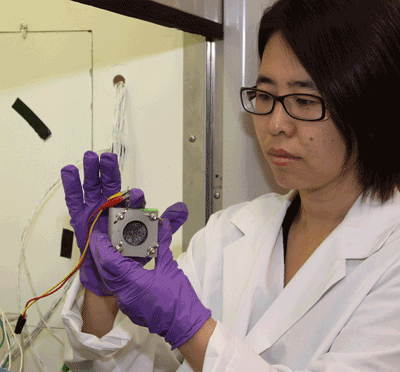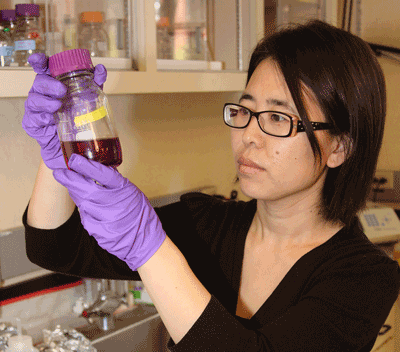Engineers convert wastewater into electricity
Could allow treatment plants to power facilities, sell excess electricity
If this technology sticks, we could all very soon be seeing a day in which waste treatment plants not only power themselves, but are actually selling their excess electricity.

Researchers at Oregon State University have discovered improved ways to produce electricity from sewage using microbial fuel cells.
Engineers out of Oregon State University have made a major breakthrough in the performance of microbial fuel cells that can produce electricity directly from wastewater. Early numbers show that the new technology can produce 10 to 50 more times the electricity per volume than most other microbial fuel cells, and 100 times more electricity than others, all while effectively cleaning the wastewater.
“If this technology works on a commercial scale the way we believe it will, the treatment of wastewater could be a huge energy producer, not a huge energy cost,” said Hong Liu, an associate professor in the OSU Department of Biological and Ecological Engineering. “This could have an impact around the world, save a great deal of money, provide better water treatment, and promote energy sustainability.”
Out with the old (process)
The biodegradable characteristics of wastewater, if tapped to their full potential, could theoretically provide many times the energy that is now being used to process them. Right now, most waste treatment plants use a process called “activated sludge” to speed up the decomposition process of solids in wastewater. Basically, it’s anaerobic organisms digesting wastewater. The process has been in practice for close to a century now, even though there are some major environmental drawbacks — namely that the microbe’s digestion leads to the subsequent production of unwanted hydrogen sulfide or possible release of methane, a potent greenhouse gas.
It is estimated that 3% of consumed electricity in the United States and other developed countries is used to treat wastewater. Unfortunately, a majority of this electricity is produced by fossil fuels, which also contribute to global warming.
In with the new (process)
The technology OSU developed cleans sewage using a very different process. Their microbial fuel cell uses microorganisms to oxidize the organic matter of wastewater directly on an anode. This produces electrons and protons which, in turn, run from the anode to the cathode of the fuel cell, thereby creating an electrical current.

Hong Liu has developed greatly improved new methods to produce electricity from the processing of wastewater.
Almost any type of organic waste material can be used to produce electricity, including grass straw, animal waste, and byproducts from such operations as the wine, beer, or dairy industries.
Believe it or not, the researchers at OSU actually reported on the promise of this technology several years ago. The problem was that the systems they were using produced significantly less electrical power. Several updates have since been made to the technology, including reduced anode-cathode spacing, evolved microbes, and new separator materials.
As a result of these changes, the technology can now produce more than two kilowatts per cubic meter of liquid reactor volume — significantly more power density than anything else ever done with microbial fuel cells.
Outlook
The OSU system has already been proven at a large-scale level in the laboratory. Next step is a pilot study (which the team is currently seeking out funding for). A good candidate, according to Liu, might be a food processing plant: it’s a contained system that produces a steady supply of particular types of wastewater and has the potential to provide a significant amount of electricity.
The team believes that continued research will likely find even more use of necessary microbes, reduced material costs, and improved function of the technology at commercial scales.
Their findings have been published in Energy and Environmental Science, a professional journal, in work funded by the National Science Foundation. ■
Story via: OregonState.edu
Advertisement
Learn more about Electronic Products Magazine





